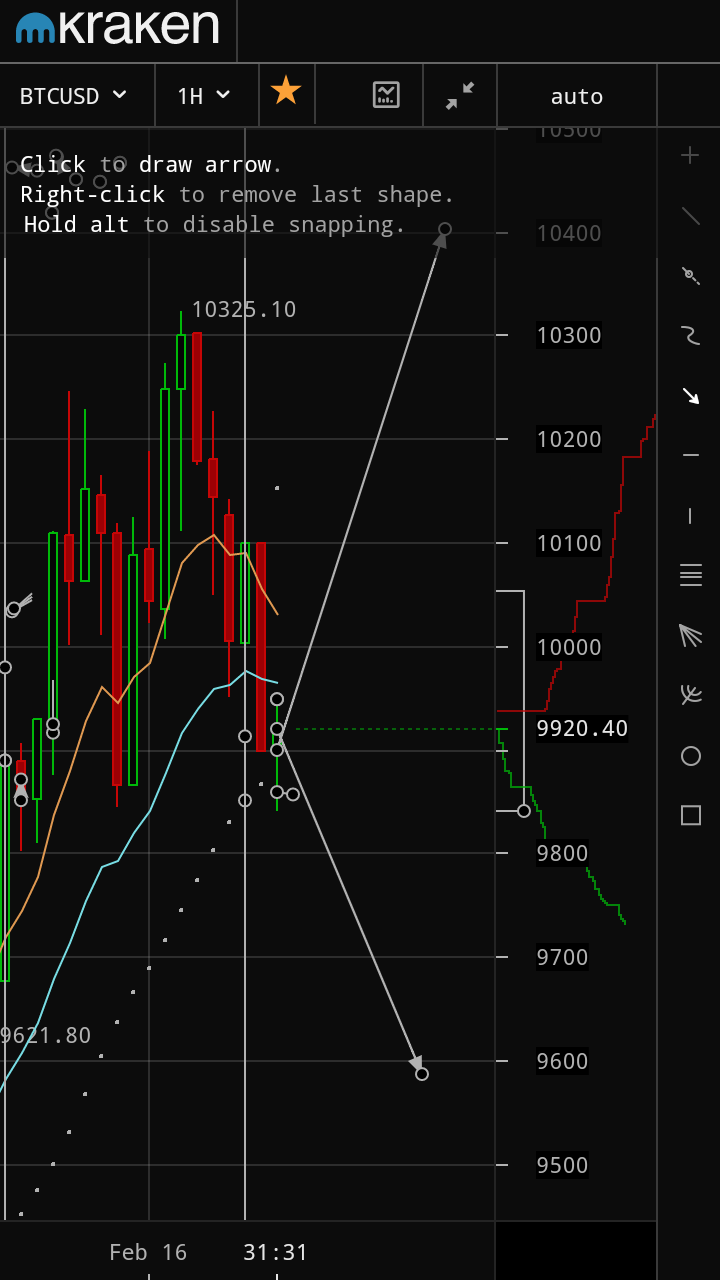
Expected trading for today is between 9600 support and 10400 resistance
technical indicators show the uptrend would likely persist.
Breaching 10200level and hold above it, will push the price toward 10500, followed by 10700 level, and might take to the price to 11000 level.
Note; Breaking 9600level and hold below it, will push the price to test 9500 level, followed a test of 8000 before any new attempt to raise.
Expected trading for today:
is between 9600 support and 10400 resistance.
The low of 2018:
5947.00 / H&S bottom.
The high of 2018:
25000.00 level.
HOW TO BECOME A DAY TRADER
During the heyday of the tech bubble in the late 1990s, day traders made easy money buying and selling Internet stocks. It didn't take much skill to succeed in those days. In just a 17-month period, from October 1998 to March 2000, the Nasdaq Composite Index skyrocketed from roughly 1,344 to an all-time high of around 5,132.
All you had to do was ride that tidal wave to rake in the profits. Many of those traders made just as much shorting the index on its way down to a low of about 1,108 in October 2002, losing 78% of its value in 31 months.
Once the bubble had fully deflated, the easy money dried up. Many of those who had profited through good luck and timing left trading and looked for other work. They discovered that day trading, like any other profession, requires education and skills to consistently make a living.
A pure day trader buys and sells stocks or other investments and ends the trading day in cash with no open positions. If a position is held overnight or for several days, it's called a swing trade. Most day traders use both approaches, depending on their trading style and the nature of their investments.
Day trading requires a professional software platform and a high-speed Internet connection.
It's best to have a powerful desktop with at least two monitors, and preferably four to six. You need multiple screens to display the charts and technical indicators that will provide your buy and sell signals.
Technical Indicators
Familiarity with stocks and market fundamentals isn't enough to succeed as a trader. You should understand technical analysis and all of the tools used to dissect chart patterns, trading volume and price movements. Some of the more common indicators are resistance and support levels, moving average convergence/divergence (MACD), volatility, price oscillators and Bollinger Bands.
Learning and understanding how these indicators work only scratches the surface of what you'll need to know to develop your personal trading style.
Strategies
Trading requires sufficient capital to take advantage of leveraging fairly large positions. Most traders make their money on relatively small price movements in liquid stocks or indexes with mid to high volatility. You need price movement to make money, either long or short. Higher volatility implies higher risk, with the potential for greater rewards and losses.
The lower the price of the stock, the more shares you'll need to gain sufficient leverage and total price movement.
THE KEY TO A SUCCESSFUL TRADE
is developing techniques to determine entry and exit points. Most traders develop a style that they stick with, once they are comfortable with it.
The advantage of trading only a few stocks is that you learn how they act under different conditions and how movement is affected by the key market makers.
Discipline
Develop a process and try it out with fictional trades. Refine the process and find what works for you. Only then should you put real money on the line and start actively trading the markets. Experienced traders define what constitutes a trading setup and the pattern and indicator combination they want to see before pulling the trigger. They rarely deviate from those setups in order to maintain focus and keep their emotions at bay.
Once you enter a position, stops should be placed to get you out of that position when a specified loss threshold is reached. If a trade is going the wrong way, hope and prayer will not help turn it around. Exiting the trade frees up your capital to redeploy to another more promising trade. You want to exit losers as soon as possible and ride the winners as long as they're profitable.
The Bottom Line
The success rate for day traders is estimated to be around only 10%, so if 90% are losing money, how could anyone expect to make a living this way? The answer lies in professional training, diligent research, refined skills, great discipline and the ability to admit mistakes and cut your losses. You have to be prepared to make split-second, unemotional decisions based on information that is sometimes incomplete, contradictory and changing by the second. The statistics prove it's clearly much easier said than done.
Day trading is not for the faint of heart. A winning strategy may involve executing many trades in one day, while avoiding the trap of overtrading and running up huge commissions. Day trading can be fun, as well as profitable, if you learn the ropes and set realistic goals.
Hi! I am a robot. I just upvoted you! I found similar content that readers might be interested in:
https://www.yahoo.com/news/become-day-trader-185234752.html
Good analysis and insight for today market .thanks you.
Excellent work, I will follow you and I will be waiting to vote for you in all your publications. Follow me to make our votes reciprocal and achieve our goals together. SUCCESS FOR BOTH ...